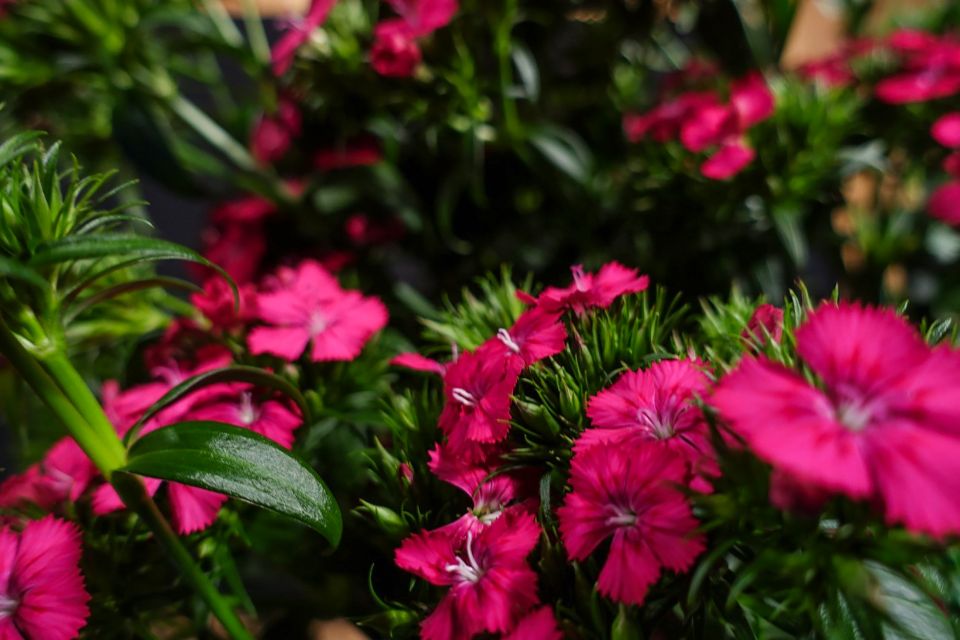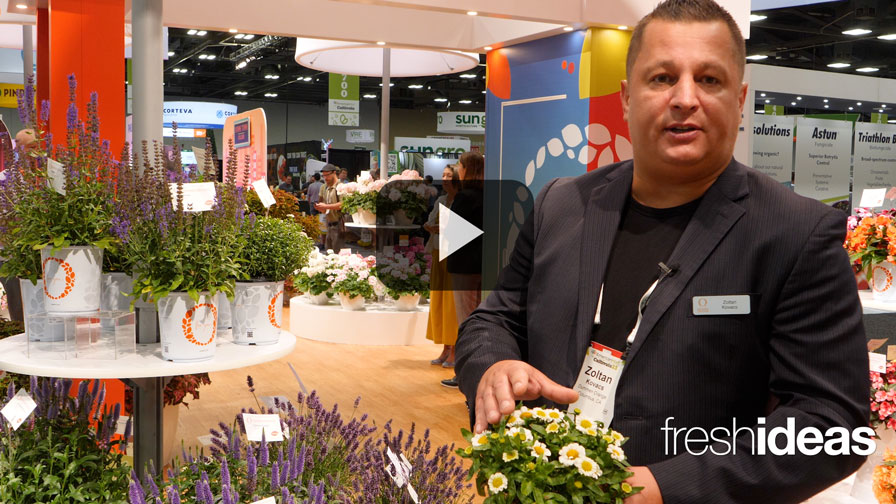Dianthus Adds Volume to Cut Flower Arrangements

Dianthus barbatus interspecific can be grown successfully as a cut flower. Photo: Roberto Lopez
When you think about dianthus as a cut flower, do fragrant carnations (Dianthus caryophyllus) immediately come to mind? Most people do not realize that there is a large assortment of dianthus cultivars commonly known as single dianthus, pinks, or Sweet William that are marketed as specialty cut flowers. For example, the Dianthus barbatus Amazon, Bouquet, and Sweet series are interspecific hybrids between Dianthus chinensis (Chinese dianthus or pinks) and barbatus (Sweet William). Dianthus Jolt is an interspecific hybrid of Dianthus barbatus. These specialty cut flower dianthus are considered fillers and add volume to arrangements as they have a dense cluster of flowers on a single stem.
In this article, we will focus on the seed propagated dianthus Amazon series from PanAmerican Seed, which has five cultivars: ‘Neon Duo’, ‘Neon Cherry’, ‘Neon Purple’, ‘Rose Magic’, and ‘Lavender Magic’ (new in 2024). This first-year flowering series can be grown in the field, high tunnels, or in the greenhouse. It is known for its high yield of bold, intense, color-changing and vivid flowers, dark green foliage, and strong stems that can grow between 18 to 36 inches (46 to 91 cm) in height depending on the season. Unlike most dianthus cultivars, the Amazon series can tolerate a large range of temperatures, making it ideal for both northern and southern production.
Before interspecific hybrids such as the Amazon series were released, pinks traditionally had a vernalization or cold requirement for flowering and thus flowered in their second year. Sweet William was considered a facultative long-day plant, meaning they would flower faster under long-days but would eventually flower under short-days. Given that the Amazon series is an interspecific hybrid of the two, many growers ask what environmental conditions should they be grown under for best results. To answer this question, the objective of our study was to quantify the influence of photoperiod and the daily light integral (DLI) on greenhouse-grown dianthus ‘Neon Cherry’ and ‘Rose Magic’ cut flowers during the young plant and flowering stages.
The Experiment
Seedlings of dianthus Amazon ‘Neon Cherry’ and ‘Rose Magic’ were grown at an average daily temperature of 68°F (20°C) [day/night 72/64°F (22/18°C)] and under a 9-, 10-, 11-, 12-, 13-, 15-, or a 16-hour photoperiod. To simulate winter and early spring conditions, the seedlings were grown under DLIs of 5 (low) or 10 mol·m–2·d–1 (moderate). After 28 days, the number of leaves, height, shoot and root dry mass was recorded for each seedling. Given that 3% to 5% of dianthus Amazon seedlings can stretch and prematurely flower ≈14 days after sowing, we recorded the presence of these “off-type” phenotypes under all treatments. Seedlings from each of the young plant photoperiods and the moderate DLI were subsequently transplanted into bulb crates with a spacing of three to four plants/ft2 (30 to 40 plants/m2). The crates were then placed under 11-, 12-, 13-, 14-, 15-, or 16-hour photoperiods, or a 4-hour night interruption (NI) from 10 p.m. to 2 a.m. and DLIs of 5 or 14 mol·m–2·d–1. Plants were monitored daily for the presence of first visible buds, open flowers, and harvestability (≥19 inches stem length).

Dianthus Amazon ‘Neon Cherry’ seedlings were grown under a 16-hour young plant photoperiod and moderate daily light integral (DLI) of 10 mol∙m–2∙d–1 and were subsequently transplanted into bulb crates under 11-, 12-, 13-, 14-, 15-, or 16-hour photoperiods or a 4-hour night interruption (NI) and a DLI of 14 mol∙m–2∙d–1. Graphic: Roberto Lopez
Implications for Greenhouse Amazon Production
We determined that dianthus seedlings with ≥17 nodes were capable of initiating flower buds. Regardless of the DLI, the stem length of seedlings increased as the photoperiod increased from nine to 16 hours for both cultivars. Under a young plant DLI of 10 mol·m–2·d–1, seedlings developed more leaves and plug production time was reduced by one week. The daylength provided during the young plant and flowering stages minimally influenced time to flower and harvest, indicating a day-neutral flowering response for dianthus Amazon ‘Rose Magic’ and ‘Neon Cherry’. However, plants grown under a moderate DLI of 14 mol·m–2·d–1 developed visible buds and were harvestable nine to ten days earlier than those finished under a low DLI of 5 mol·m–2·d–1. Harvested stems were commercially similar when grown under moderate DLIs, regardless of young plant or finishing photoperiods.
We considered stems to be marketable if they were >20 inches (>50 cm) in length and when the terminal inflorescence were 50% open. Under a moderate DLI, ≈99% of stems harvested were marketable, were 30% thicker, and had six to eight more inflorescences, while only up to 32% and 57% of dianthus ‘Rose Magic’ and ‘Neon Cherry’ grown under the low DLI were marketable. Under a flowering DLI of 5 mol∙m–2∙d–1, stems were weak and produced webbed and leggy inflorescences.
These findings indicate that high- quality greenhouse-grown dianthus ‘Neon Cherry’ and ‘Rose Magic’ cut flowers can be produced when seedlings are grown under any photoperiod between nine and 16 hours for four weeks, and finished under any photoperiod between 11 and 16 hours, or a four-hour NI for flowering. If longer stems are desired, plants can be finished under a 16-hour photoperiod. Young plants should be grown under a moderate DLI of ≥10 mol∙m–2∙d–1 to promote both vegetative and root growth and reduce propagation time. For flowering, plants should be grown under a minimum DLI ≥14 mol·m–2·d–1 to reduce crop time and increase stem thickness and yield.
We thank J.R. Peters for fertilizer, Hydrofarm for netting, East Jordan Plastics for containers, PanAmerican Seed for seeds, and Raker-Roberta’s Young Plants for sowing and trays. This research study was supported by Bloom Studios (PanAmerican Seed) and the Association of Specialty Cut Flower Growers.










